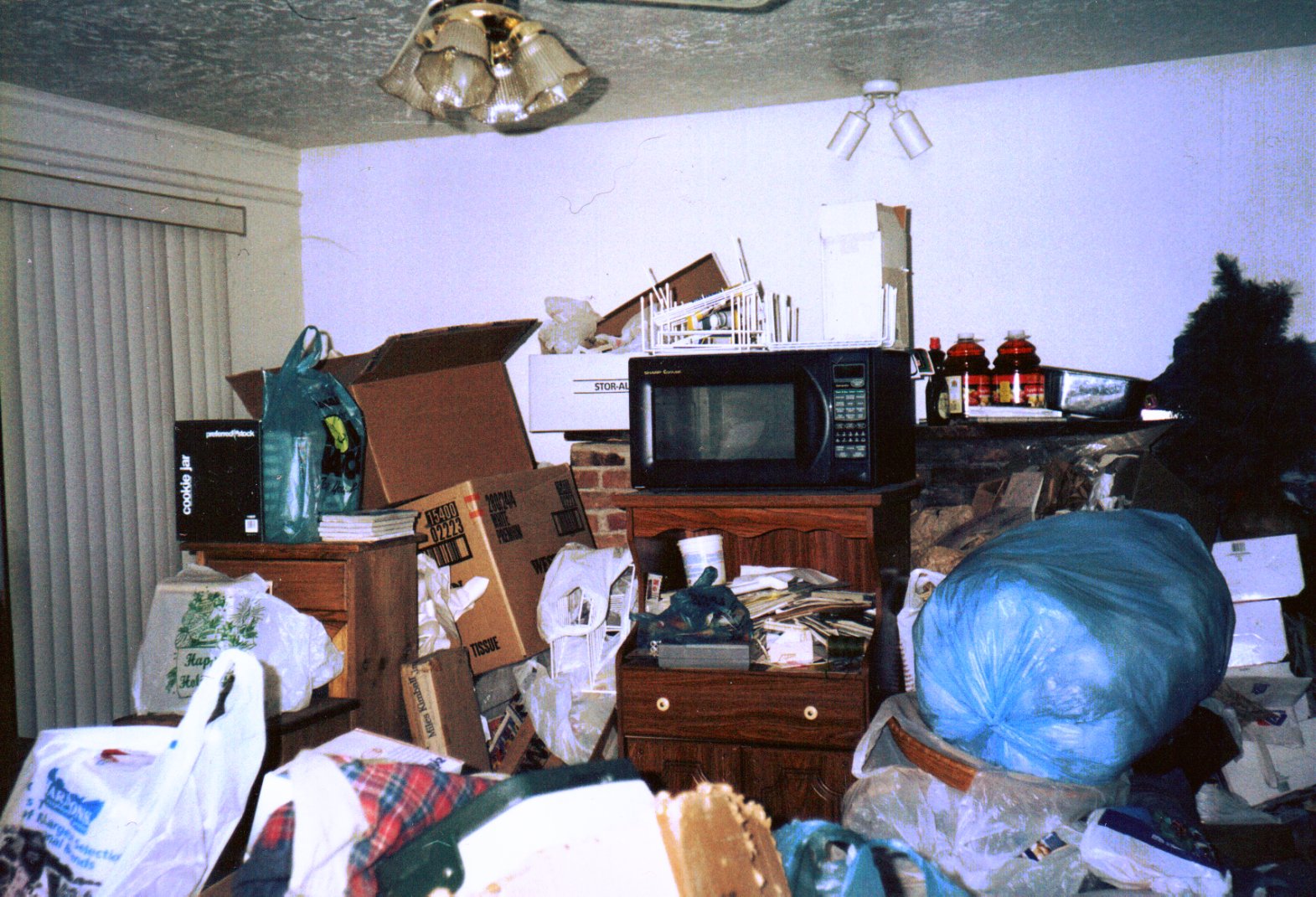Difference Between Hoarding Disorder and Clutter
Both hoarding disorder and clutter involve messiness and accumulating several items. Their sources of clutter include acquired stuff such as hand-me-downs and gifts, items which were bought, things with sentimental value like baby clothes, and useful stuff which have not been used for a long time. However, unlike hoarding disorder, clutter is not defined as a mental illness. Clutter becomes a hoarding disorder when the pile of disorganized objects causes clinically significant distress or impairment in functioning. For instance, it is already a disorder when the accumulated objects are so many that it is impossible to move comfortably. The clutter has built up that there are no rooms available and there are already increased risks of injury, diseases, and poor work performance. The following discussions further delve into their differences.

What is Hoarding Disorder?
According to the Diagnostic and Statistical Manual of Mental Disorders, 5th edition (DSM-5; 2013), hoarding disorder is characterized by persistent difficulties in discarding possessions irrespective of their actual value. People with this condition feel the need to save certain items and experience distress in relation to discarding them. They may perceive that the items have aesthetic, utility, or sentimental value. Some of them may also feel that they might lose important information if they discard items such as mails, newspapers, paperwork, and books. It should be noted that the nature of items is not limited to seemingly useless things; many individuals with hoarding disorder accumulate valuable items which are usually piled with other less valuable ones. Other features of hoarding disorder include perfectionism, procrastination, difficulty planning, avoidance, and being easily distracted.
Some patients are diagnosed with “animal hoarding”, they accumulate a large number of animals, but they fail to provide minimum standards of care which eventually leads to disease and death. Many of those who hoard animals also hoard inanimate objects. Since they have significant difficulties in selling, recycling, throwing or giving away possessions, their living areas are substantially compromised. For instance, it is already impossible to cook in the kitchen or sleep on the bed because of the clutter. Some of them may have uncluttered spaces but only with the intervention of family members, authorities, cleaners, or other third parties. The symptoms cause clinically significant distress or impairment in functioning. The risk and prognostic factors include being indecisive, stressful and traumatic life events, and genetics (50% of those who hoard have a relative who hoards).

What is Clutter?
DSM-5 defines clutter as a big pile of often unrelated (or slightly related) objects in a disorganized way in spaces designed for other functions such as beds, hallways, and tabletops (2013). Moreover, physical clutter at home is defined as items which are broken or unused and need to be taken out of the house. These are also items which are in the wrong place or need to be given back (Chrissy, 2021).
The sources of clutter include acquired stuff such as hand-me-downs and gifts, items which were bought, things with sentimental value like baby clothes, and useful stuff which have not been used for a long time. Many people hang on to clutter because of guilt; they feel bad when they let go of certain things because of their perceived value (Eneriz, 2021).
It is normal to have clutter every now and then in our houses, workplace, etc. Different people are used to equally different degrees of clutter. Those with problem-level clutter may have significant struggles in maintaining the tidiness of their homes; the mess often returns even after getting help with cleaning. The red flags include buying many of the same things over time, paying bills late because it is difficult to find them, feeling out of control because of the clutter, having family fights because of the mess, and unable to receive visitors because of the disorderliness (Scott, 2014).
Difference between Hoarding Disorder and Clutter
Definition
According to the Diagnostic and Statistical Manual of Mental Disorders, 5th edition (DSM-5; 2013), hoarding disorder is characterized by persistent difficulties in discarding possessions irrespective of their actual value. People with this condition feel the need to save certain items and experience distress in relation to discarding them. In comparison, DSM-5 defines clutter as a big pile of often unrelated (or slightly related) objects in a disorganized way in spaces designed for other functions such as beds, hallways, and tabletops (2013). Moreover, physical clutter at home is defined as items which are broken or unused and need to be taken out of the house. These are also items which are in the wrong place or need to be given back (Chrissy, 2021).
Mental Disorder
Hoarding disorder is a mental illness classified under obsessive-compulsive and related disorders with the following specifications: with excessive acquisition, with good or fair insight, with poor insight, and with absent insight/ delusional beliefs. On the other hand, significantly cluttered living areas is a symptom of hoarding disorder (DSM-5, 2013). It is normal to have clutter every now and then in our houses, workplace, etc. Different people are used to equally different degrees of clutter. Those with problem-level clutter have significant struggles in maintaining the tidiness of their homes.
Treatment/ Intervention
Psychotherapy such as cognitive behavioral therapy (CBT) is helpful in treating hoarding disorder; particularly, Frost and Gail Steketee developed a 26-session CBT program to help individuals with hoarding disorder (Weir, 2020). For some patients, medications are helpful in improving symptoms (American Psychiatric Association, 2017). As for clutter, self-help groups such as “Messies Anonymous” and “Cluterrers Anonymous” are helpful in giving ongoing support. Hiring a pro-organizer may also help with getting on top of things and CBT may is also helpful in addressing underlying issues such as depression or ADHD (Scott, 2014).
Hoarding Disorder vs Clutter

Summary
- Hoarding disorder is characterized by persistent difficulties in discarding possessions irrespective of their actual value.
- Clutter becomes a hoarding disorder when the pile of disorganized objects causes clinically significant distress or impairment in functioning.
- The treatment for hoarding disorder includes psychotherapy like CBT and medication while the intervention for problematic clutter includes self-help groups, hiring a pro-organizer, and CBT for underlying issues.
- Difference Between Hematoma and Melanoma - February 9, 2023
- Difference Between Bruising and Necrosis - February 8, 2023
- Difference Between Brain Hematoma and Brain Hemorrhage - February 8, 2023
Search DifferenceBetween.net :
Leave a Response
References :
[0]American Psychiatric Association (2013). Diagnostic and statistical manual of mental disorders, 5th edition.
[1]American Psychiatric Association (2017). What is hoarding disorder? https://www.psychiatry.org/patients-families/hoarding-disorder/what-is-hoarding-disorder
[2]Chrissy (2021). What is clutter? Organize My House. https://organisemyhouse.com/what-is-clutter/
[3]Eneriz, A. (2021). 4 Sources of clutter. Money Ning. https://moneyning.com/better-yourself/the-4-sources-of-clutter-and-how-to-kick-them-out-of-your-life/
[4]Scott, P. (2014). Clutter vs. Hoarding. WebMD. https://www.webmd.com/balance/features/clutter-hoarding
[5]Weir, K. (2020). Treating people with hoarding disorder. American Psychological Association. https://www.apa.org/monitor/2020/04/ce-corner-hoarding
[6]Image credit: https://live.staticflickr.com/5531/11740762976_df1c5f3085_b.jpg
[7]Image credit: https://commons.wikimedia.org/wiki/File:Hoarding_living_room.jpg
